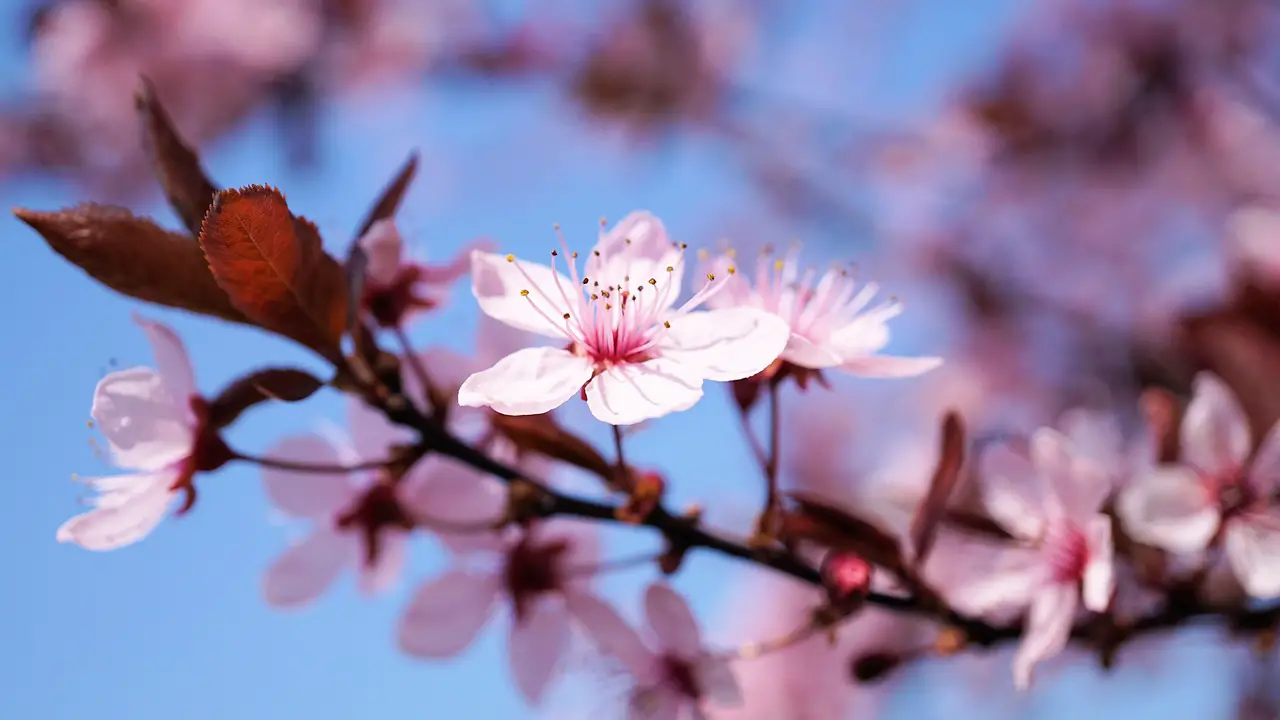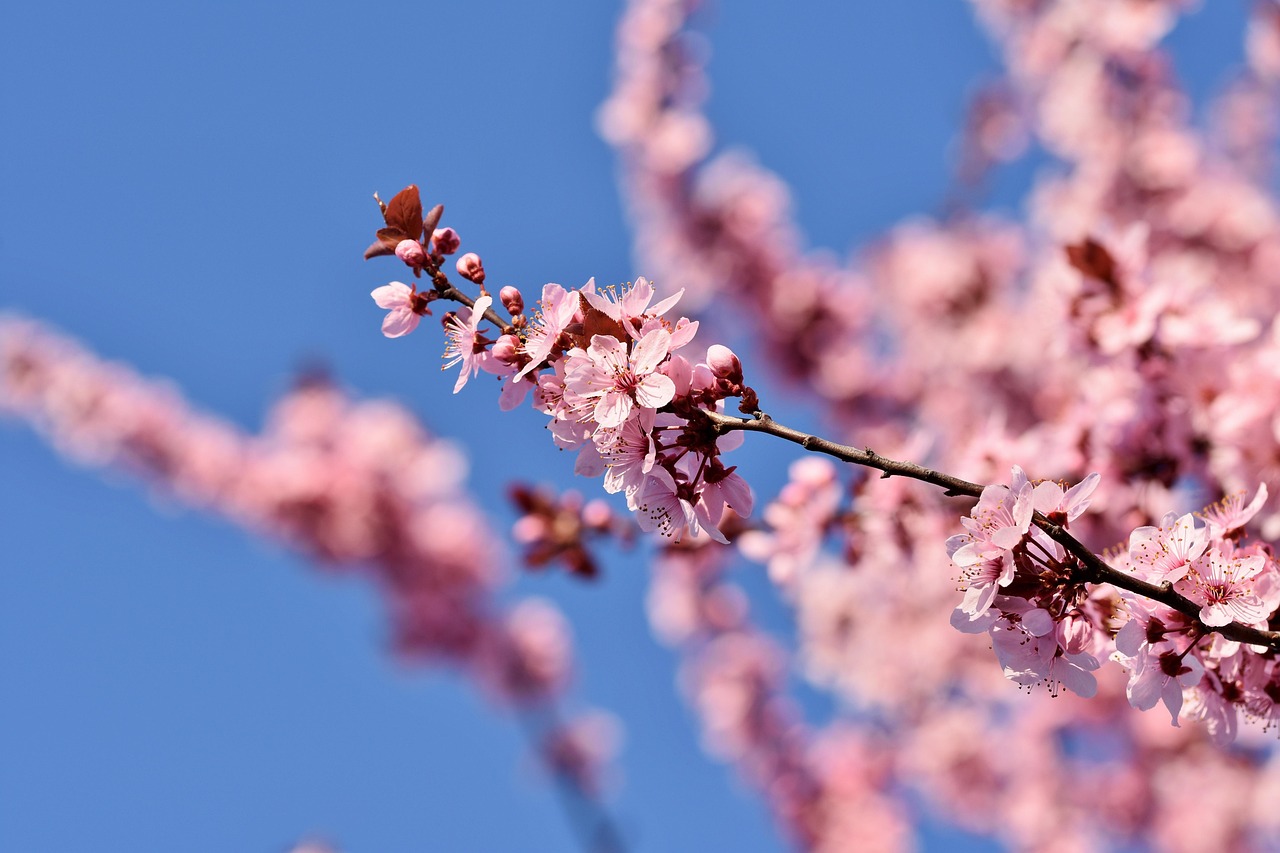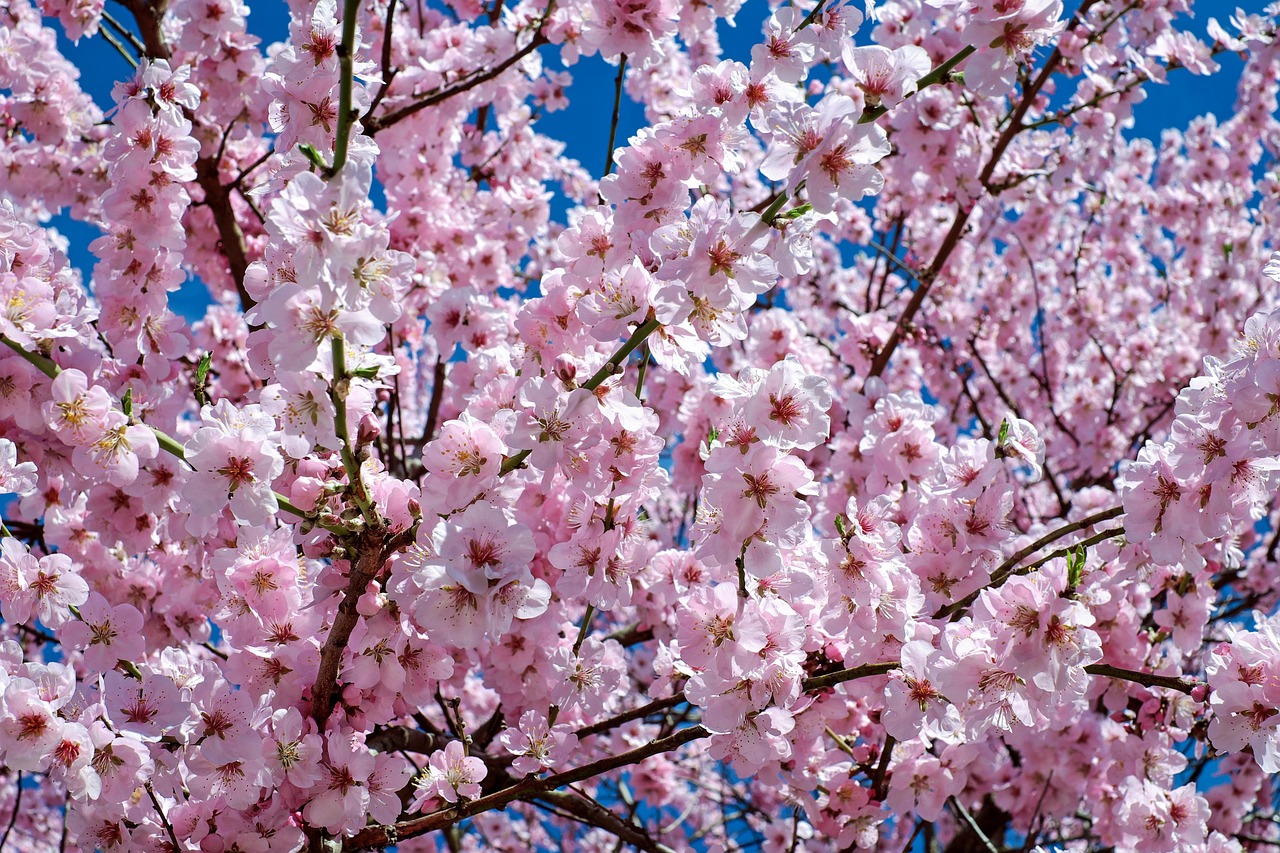The Black Cherry tree (Prunus serotina) typically exhibits a growth rate of 24 to 36 inches per year in its native habitats, depending on soil quality, moisture availability, and competition with other vegetation.
The Black Cherry tree is a native species found primarily in eastern North America. It thrives in a variety of habitats, including forests, open woodlands, and along the edges of fields. This deciduous tree is known for its attractive bark, fragrant flowers, and valuable fruit. The growth rate of Black Cherry trees is influenced by numerous factors, including environmental conditions and competition with neighboring plants.

Understanding the growth rate of Black Cherry trees is essential for forest management, conservation efforts, and landscape planning. Their rapid growth makes them a popular choice for reforestation projects. In addition to their aesthetic appeal, Black Cherry trees provide vital habitat and food for various wildlife species.
Factors Influencing Growth Rate
Several environmental and biological factors influence the growth rate of Black Cherry trees. These include soil quality, water availability, light exposure, and competition from other plants. Below are key factors that play a role in determining how quickly these trees can grow:
- Soil Quality: Black Cherry trees prefer well-drained, fertile soils with a pH between 6.0 and 7.0. Poor soil conditions can lead to stunted growth.
- Moisture Availability: Adequate moisture is crucial for optimal growth. Trees in areas with consistent rainfall tend to grow faster than those in drier regions.
- Light Exposure: Black Cherry trees thrive in full sunlight but can tolerate partial shade. Insufficient light can slow their growth significantly.
- Competition: The presence of other vegetation can affect the growth rate. If competing plants are too dense, they may hinder the growth of Black Cherry trees by limiting access to resources.
The growth rate can also vary based on the tree’s age and health. Young saplings tend to grow more quickly than older trees that may have experienced stress or damage over the years. Additionally, local climate conditions play a significant role in determining the overall growth potential of these trees.

Growth Rate Comparisons
When comparing the Black Cherry tree’s growth rate to other tree species in similar habitats, the following table highlights differences in growth rates among selected native trees:
| Tree Species | Average Growth Rate (inches per year) | Comments |
|---|---|---|
| Black Cherry (Prunus serotina) | 24-36 | Fast-growing; prefers rich soils. |
| Red Maple (Acer rubrum) | 24-30 | Adaptable; grows well in wet conditions. |
| White Oak (Quercus alba) | 12-24 | Slower growth; prefers well-drained soils. |
| Sugar Maple (Acer saccharum) | 12-24 | Moderate growth; prefers cooler climates. |
This table illustrates that while the Black Cherry tree has a competitive growth rate, other species like the Red Maple also show significant growth potential under favorable conditions. Understanding these comparisons helps land managers make informed decisions when considering tree planting and forest restoration projects.
In addition to natural factors influencing growth rates, human activities such as land management practices and urbanization impact tree growth. Areas that have been disturbed or developed may see slower growth rates due to soil compaction and reduced water availability.

Habitat Preferences
The habitat preferences of the Black Cherry tree also contribute to its growth dynamics. These trees thrive in a range of environments but particularly flourish in areas that provide the right balance of sunlight, moisture, and nutrients. They are often found in:
- Damp bottomlands
- Upland forests
- Disturbed sites such as old fields or logged areas
- Forest edges where sunlight is abundant
This adaptability has allowed the Black Cherry tree to establish itself across various ecosystems, making it a resilient species that can cope with changing environmental conditions.
Ecological Importance of Black Cherry Trees
The Black Cherry tree is not only valued for its beauty and timber but also plays a critical role in its native ecosystems. Its ecological contributions are significant, affecting both flora and fauna. Understanding these contributions can provide insights into why preserving this species is vital for environmental health.
Wildlife Support
Black Cherry trees offer various benefits to wildlife. They provide habitat and food for numerous species, enhancing biodiversity in forested areas. Key aspects of their ecological importance include:

- Fruit Production: The small, dark fruits produced by Black Cherry trees are highly nutritious and serve as a food source for many birds, mammals, and insects.
- Nesting Sites: The dense foliage provides excellent cover and nesting sites for birds, supporting their reproductive success.
- Insect Habitat: Black Cherry trees can attract numerous insects, which in turn serve as food for other wildlife, including birds and small mammals.
The presence of Black Cherry trees in a habitat can significantly increase the variety of species that thrive in that area. Their fruits, in particular, attract various birds such as the American Robin and the Cedar Waxwing, which are essential for seed dispersal.
Soil Health Improvement
Another important aspect of Black Cherry trees is their ability to improve soil health. They contribute to the ecosystem through:
- Leaf Litter: The fallen leaves decompose and add organic matter to the soil, enhancing its nutrient content.
- Root System: The deep root systems of mature Black Cherry trees help aerate the soil and improve water infiltration.
- Nitrogen Fixation: Though not a nitrogen-fixing species itself, the presence of Black Cherry trees can support the growth of nitrogen-fixing plants nearby, which further enriches the soil.
The enhancement of soil quality leads to healthier plant communities, promoting overall forest vitality and resilience against diseases and pests.
Cultural Significance
Beyond ecological benefits, Black Cherry trees hold cultural significance in various communities. They have been utilized by indigenous peoples and local communities for generations. Some key aspects include:
- Timber Value: The wood of the Black Cherry tree is prized for its rich color and durability. It is widely used in furniture making, cabinetry, and flooring.
- Culinary Uses: The cherries are edible and can be used in jams, jellies, and wines. They have also been used traditionally in various recipes.
- Medicinal Uses: Historically, different parts of the tree have been used in traditional medicine to treat ailments like coughs and colds.
The cultural ties to Black Cherry trees highlight their importance beyond mere aesthetics. They serve both practical purposes and foster a connection between communities and their natural surroundings.
Growth Patterns Across Native Regions
The growth patterns of Black Cherry trees can vary significantly depending on their specific native habitats. Factors such as climate, soil type, and competition can lead to differences in height, trunk diameter, and overall health. Here are some observations based on geographical regions:
| Region | Average Height (feet) | Typical Diameter (inches) | Common Soil Types |
|---|---|---|---|
| Eastern U.S. | 50-80 | 12-24 | Sandy loam, clay loam |
| Southern U.S. | 30-60 | 10-20 | Sandy soils, alluvial soils |
| Midwest U.S. | 40-70 | 10-22 | Clay soils, rich loam |
| Northern U.S. | 40-75 | 12-26 | Sandy loam, gravelly soils |
This table illustrates how regional variations influence the growth characteristics of Black Cherry trees. Understanding these differences is essential for land managers and conservationists as they work to maintain healthy populations of this important species in various environments.
Pest and Disease Resistance
While Black Cherry trees are relatively resilient, they can be susceptible to certain pests and diseases. Awareness of these threats is crucial for their management and conservation. Common issues include:
- Pests: The Black Cherry tree can be affected by pests such as tent caterpillars and cherry fruit flies. Monitoring these pests helps maintain tree health.
- Diseases: Fungal diseases like black knot can affect the tree’s growth and vigor. Regular inspections can help identify problems early.
- Cultural Practices: Proper cultural practices, including pruning and fertilization, can enhance resistance to pests and diseases.
By understanding these threats and implementing effective management strategies, it is possible to maintain the health and growth rates of Black Cherry trees in their native habitats.
Propagation Methods for Black Cherry Trees
Propagating Black Cherry trees can be achieved through several methods, each with its advantages and drawbacks. Understanding these methods is essential for anyone interested in cultivating this species, whether for personal landscaping or larger reforestation projects.
Seed Propagation
Seed propagation is the most common method for growing Black Cherry trees. This method involves several steps to ensure successful germination and growth:
- Seed Collection: Collect seeds from mature fruits in late summer to early fall when they are fully ripe.
- Stratification: To mimic seasonal conditions, seeds should undergo cold stratification. This can be done by placing seeds in a moist medium and refrigerating them for 30 to 60 days.
- Sowing: After stratification, sow the seeds in well-drained soil, ensuring they are planted at a depth of about 1 inch.
- Watering: Maintain consistent moisture during the germination period, typically lasting two to four weeks.
Seed propagation is cost-effective but can result in genetic variability among seedlings. This variability may lead to differences in growth rates and overall health.
Vegetative Propagation
Another method of propagation is vegetative propagation, which can produce clones of existing trees. This method includes techniques such as:
- Cuttings: Take softwood cuttings in late spring or early summer. Cuttings should be about 6 inches long and taken from healthy, disease-free trees.
- Layering: This method involves bending a low branch to the ground and covering a portion of it with soil. The buried section will develop roots while still attached to the parent tree.
- Grafting: Grafting involves joining a cutting from a desired tree onto a rootstock. This method is often used to combine desirable traits from different trees.
Vegetative propagation allows for faster growth rates and ensures that new trees will have the same genetic characteristics as the parent tree. However, it requires more skill and attention than seed propagation.
Cultivation Practices for Optimal Growth
To ensure healthy growth rates of Black Cherry trees, specific cultivation practices should be followed. These practices focus on providing the right environment and care for the trees throughout their life cycle.
Soil Preparation
The success of Black Cherry trees begins with proper soil preparation. Consider the following:
- Soil Testing: Conduct tests to determine soil pH and nutrient levels. Amend the soil based on test results to optimize conditions.
- Tilling: Loosen compacted soil to improve drainage and aeration. This helps young roots establish themselves more easily.
- Add Organic Matter: Incorporate compost or well-rotted manure to enhance soil fertility.
Irrigation
Watering is crucial, particularly during the early stages of growth. Key considerations include:
- Establishment Phase: Water newly planted trees frequently to help them establish roots. Aim for deep watering rather than frequent shallow watering.
- Drought Conditions: During extended dry spells, monitor soil moisture and water as necessary to prevent stress on the trees.
Pest Management
Effective pest management strategies are essential for maintaining healthy Black Cherry trees. Consider integrating the following practices:
- Regular Inspections: Frequently check trees for signs of pests or diseases. Early detection allows for prompt action.
- Natural Predators: Encourage beneficial insects that prey on common pests, reducing the need for chemical interventions.
- Pesticides: If necessary, use environmentally friendly pesticides as a last resort, following all application guidelines.
Growth Rate Variability in Different Environments
The growth rate of Black Cherry trees can vary significantly based on environmental conditions. Factors such as climate, elevation, and local ecosystem interactions play a critical role in determining how quickly these trees grow.
| Environment Type | Average Growth Rate (inches per year) | Main Influencing Factors |
|---|---|---|
| Damp Bottomlands | 30-36 | High moisture levels, nutrient-rich soils |
| Upland Forests | 24-30 | Moderate sunlight, competition with other species |
| Disturbed Sites | 30-40 | Adequate sunlight, reduced competition initially |
| Forest Edges | 28-34 | Increased sunlight exposure, diverse understory vegetation |
This table demonstrates how different habitats can affect the growth rates of Black Cherry trees. Understanding these variations aids in selecting appropriate sites for planting and managing existing populations effectively.
The interplay between environmental factors and growth rates highlights the importance of site selection in cultivation efforts. By providing optimal conditions tailored to their native habitats, we can foster healthier and faster-growing Black Cherry trees.
In addition to understanding the growth rates of Black Cherry trees in various habitats, it is essential to consider the broader implications of their cultivation and management. These trees play a multifaceted role in ecosystem health, timber production, and cultural heritage. Their adaptability and resilience make them an attractive option for reforestation and landscaping projects.
Conservation Efforts
Conservation of Black Cherry trees is vital, given their ecological importance and economic value. Various organizations and governmental bodies have initiated programs aimed at preserving native tree species and promoting sustainable forest management practices. Some key conservation strategies include:
- Reforestation Projects: Planting Black Cherry trees in deforested or degraded areas helps restore ecosystems and improve biodiversity.
- Education and Awareness: Raising awareness about the importance of Black Cherry trees can foster community involvement in conservation efforts.
- Seed Banks: Establishing seed banks can ensure the preservation of genetic diversity among Black Cherry trees, supporting future cultivation and restoration efforts.
By implementing these strategies, communities can contribute to the sustainability of Black Cherry populations while enhancing their local environments.
Economic Benefits
The economic benefits of cultivating Black Cherry trees are significant. They provide a valuable source of timber, which is highly sought after in the furniture industry. The wood’s rich color and grain make it ideal for high-quality products. Additionally, the fruit produced by Black Cherry trees can be harvested for commercial use, including:
- Food Products: Black Cherry fruits are used in jams, jellies, and as flavoring agents in various dishes and beverages.
- Medicinal Applications: The tree’s bark and leaves have been used in traditional medicine, adding potential economic value to the species.
- Ecotourism: The beauty and ecological significance of Black Cherry trees can attract visitors to natural areas, benefiting local economies through tourism.
Long-Term Management Strategies
To ensure the long-term health and growth of Black Cherry trees, ongoing management practices should be implemented. These practices may include:
- Monitoring Growth Rates: Regular assessments of growth rates can help identify areas where interventions may be needed to optimize conditions.
- Timber Harvesting Practices: Sustainable harvesting techniques should be employed to minimize environmental impact while generating economic returns.
- Community Involvement: Engaging local communities in tree planting and maintenance initiatives can foster stewardship and ensure the success of conservation efforts.
By adopting these long-term strategies, stakeholders can maintain healthy populations of Black Cherry trees that continue to thrive in their native habitats.
Final Thoughts
The growth rate of Black Cherry trees in their native habitats is influenced by a complex interplay of environmental factors, ecological relationships, and human impacts. Understanding these dynamics is crucial for effective management and conservation. By promoting sustainable practices, fostering community involvement, and recognizing the ecological and economic benefits of these trees, we can ensure that Black Cherry trees remain a vital part of our forests.
The significance of Black Cherry trees extends beyond their growth rates. Their role in supporting wildlife, improving soil health, and contributing to cultural heritage cannot be overstated. As we look ahead, it is essential to prioritize the conservation of this valuable species and its habitats. By doing so, we not only protect an important natural resource but also enhance the resilience of our ecosystems for future generations.
In conclusion, the continued study and management of Black Cherry trees will contribute to their preservation and growth in native habitats. Engaging with communities, fostering sustainable practices, and appreciating their ecological roles will ensure these magnificent trees flourish for years to come.
